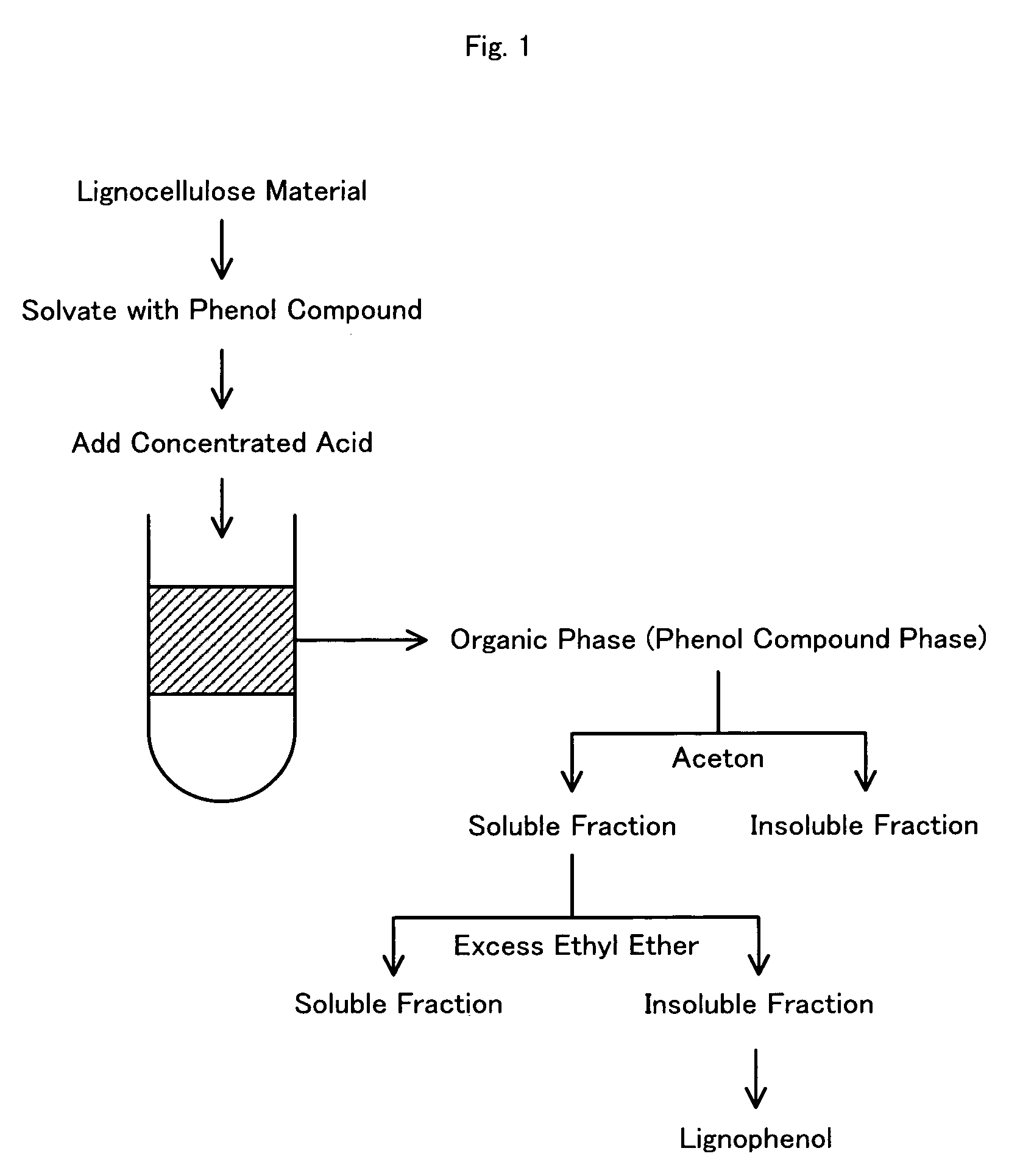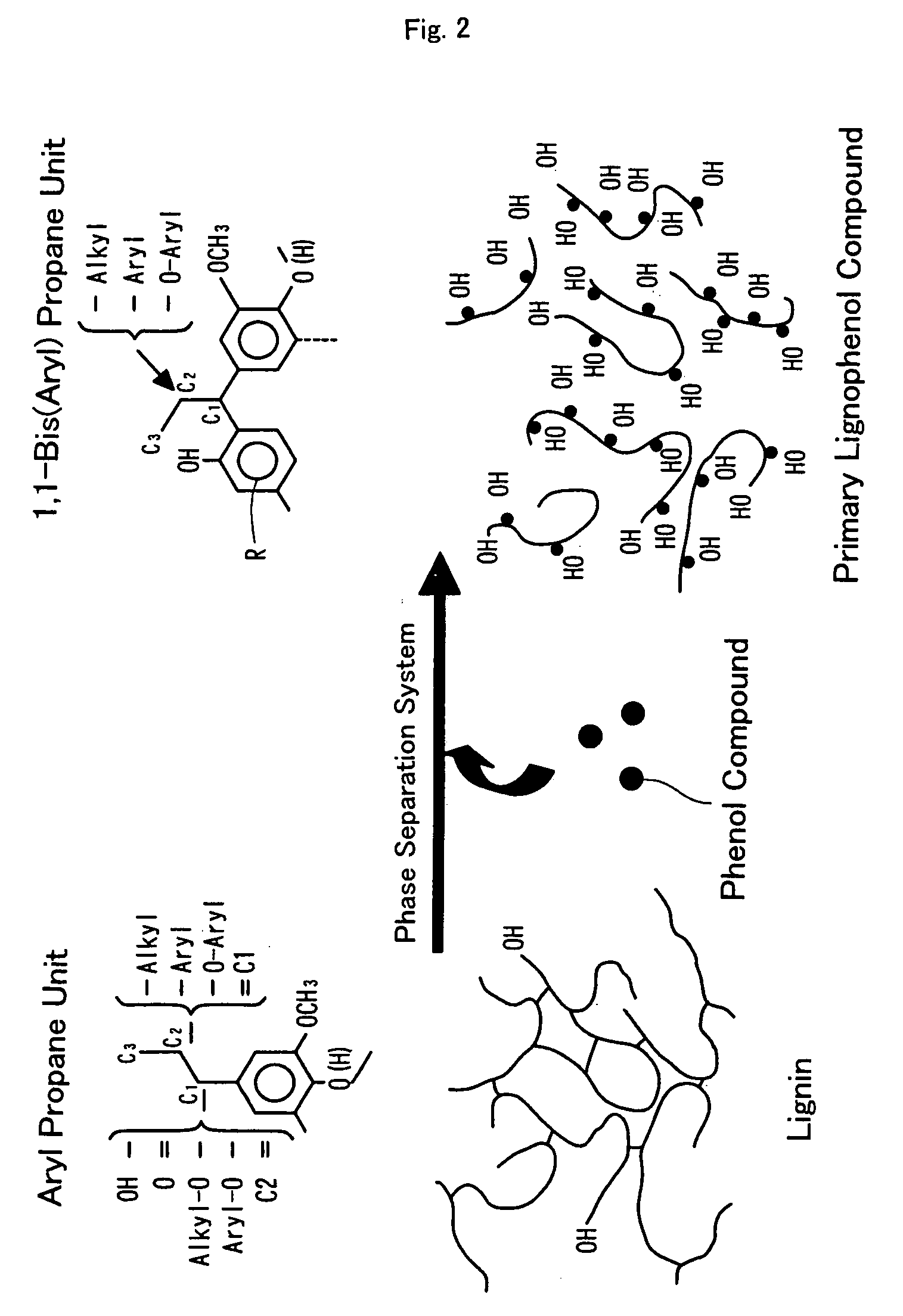Application of lignin derivatives to photoelectric transducer and photoelectrochemical cell
a technology of photoelectrochemical cells and lignin derivatives, applied in the direction of electrochemical generators, sustainable manufacturing/processing, final product manufacturing, etc., can solve the problems of large energy and chemical consumption of solar cells, high manufacturing cost, energy and environment-related problems, etc., and achieve the effect of accelerating the recycling of wood resources
- Summary
- Abstract
- Description
- Claims
- Application Information
AI Technical Summary
Benefits of technology
Problems solved by technology
Method used
Image
Examples
example 1
Preparation of Lignophenol Derivative
[0137] After addition of 3.0 ml of an acetone solution containing 3.0 g of p-cresol to 3.0 g of acetone-defatted, dried Douglas fir powder with stirring, the mixture was sealed and stood overnight. The wood powder with adsorbed p-cresol was obtained by stirring the mixture with a glass bar for removal of acetone. The preparation process then added 3.0 ml of 72% sulfuric acid to the total volume of the p-cresol-adsorbed wood powder, swiftly stirred the mixture with a glass bar to lower the viscosity of the mixture, and magnetically stirred the mixture for one hour in the atmosphere at room temperature. The mixture was then added to 300 ml of ion-exchange water with stirring and was subject to centrifugal separation for removal of the acid content to pH 5 through 6. The sediment was freeze-dried overnight, was added to 300 ml of acetone, and was sealed and magnetically stirred overnight in the atmosphere at room temperature. The reaction solution ...
example 2
Production of Photoelectrochemical Cell
[0138] A photosensitizer solution was prepared by dissolving 10 mg of the ligno-p-cresol obtained in Example 1 in 20 ml of acetone. An FTO glass plate coated with a titanium oxide thin film over an area of 30 mm×20 mm was soaked in the photosensitizer solution overnight. After drying the photosensitized FTO glass plate, the production process applied 3 drops of an I2 / KI solution onto the titanium oxide thin film coat of the dried photosensitized FTO glass plate. The photosensitized FTO glass plate was then placed and fixed between a pair of FTO glass plates with carbon deposited thereon at 60 KeV. This completed a photoelectrochemical cell (solar cell)
example 3
Performance Evaluation
[0139] The solar cell produced in Example 2 was exposed to solar rays, 20 WFL fluorescent light, and 20 WHL incandescent light and was evaluated for the photoelectromotive force and the photoelectric current. The results of evaluation are shown in Table 2:
TABLE 2PhotoelectromotivePhotoelectricForceCurrentExposure ConditionV (mV)I (μA / cm2)Solar Rays (Direct Sunlight)35684.7Solar Rays (Shade)32422.7Fluorescent Light (Distance: 10 mm)1822.7Incandescent Light2022.7(Distance: 10 mm)
[0140] The results of evaluation in Table 2 prove the sufficient electric power supply from the solar cell produced in Example 2.
PUM
 Login to View More
Login to View More Abstract
Description
Claims
Application Information
 Login to View More
Login to View More - R&D
- Intellectual Property
- Life Sciences
- Materials
- Tech Scout
- Unparalleled Data Quality
- Higher Quality Content
- 60% Fewer Hallucinations
Browse by: Latest US Patents, China's latest patents, Technical Efficacy Thesaurus, Application Domain, Technology Topic, Popular Technical Reports.
© 2025 PatSnap. All rights reserved.Legal|Privacy policy|Modern Slavery Act Transparency Statement|Sitemap|About US| Contact US: help@patsnap.com



